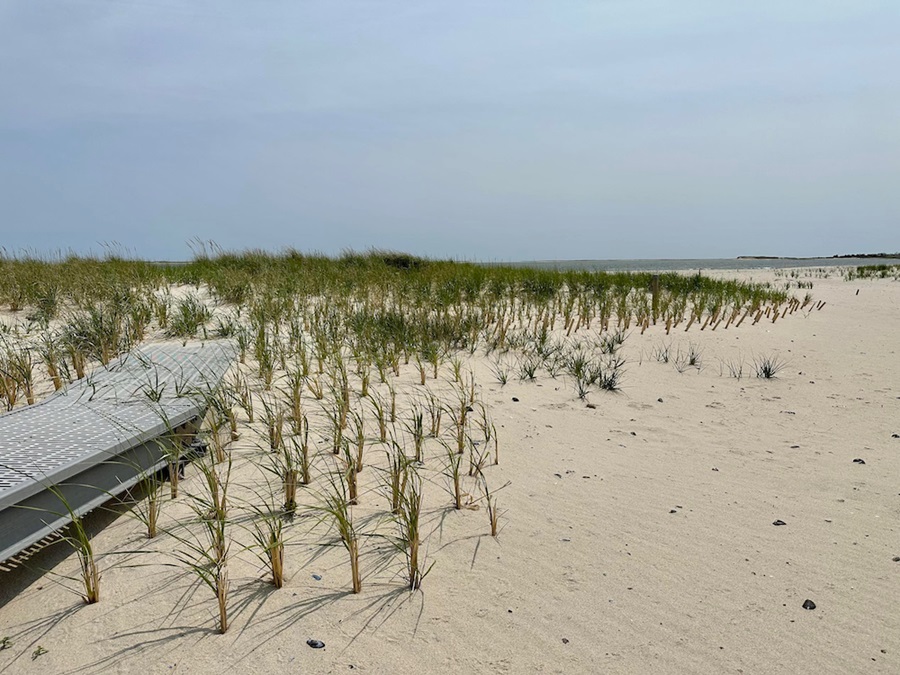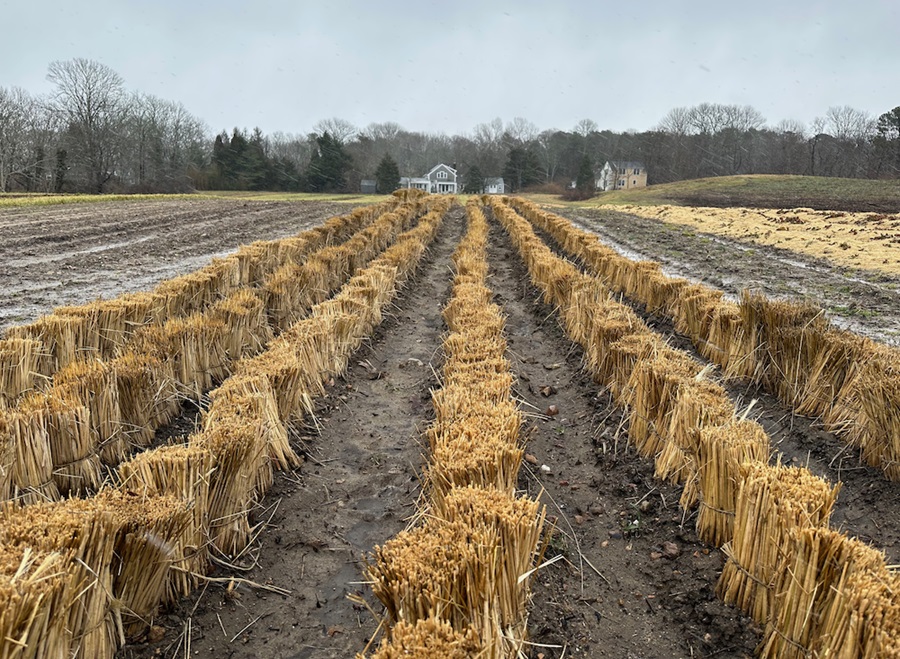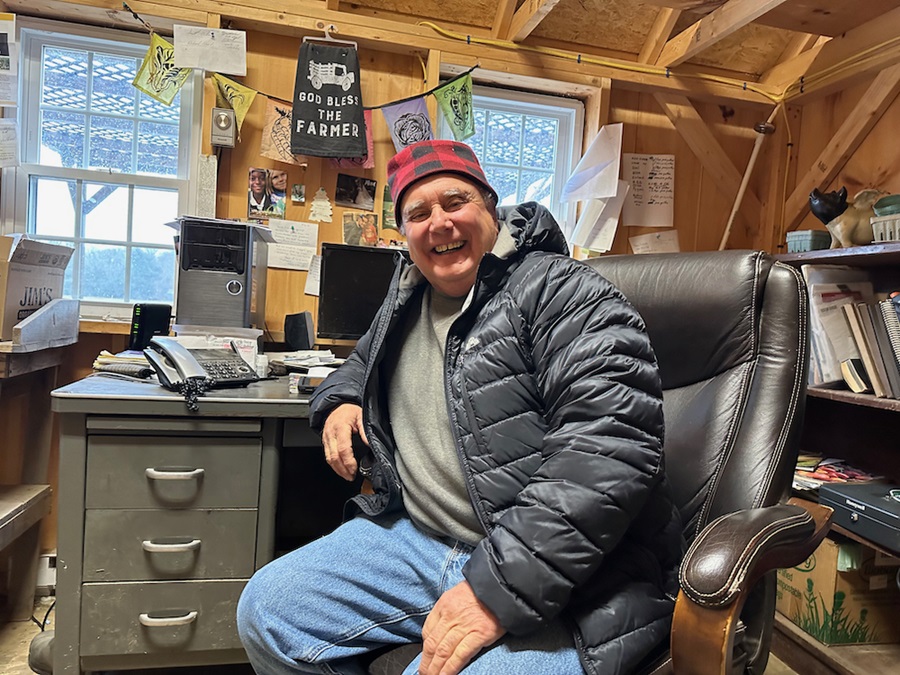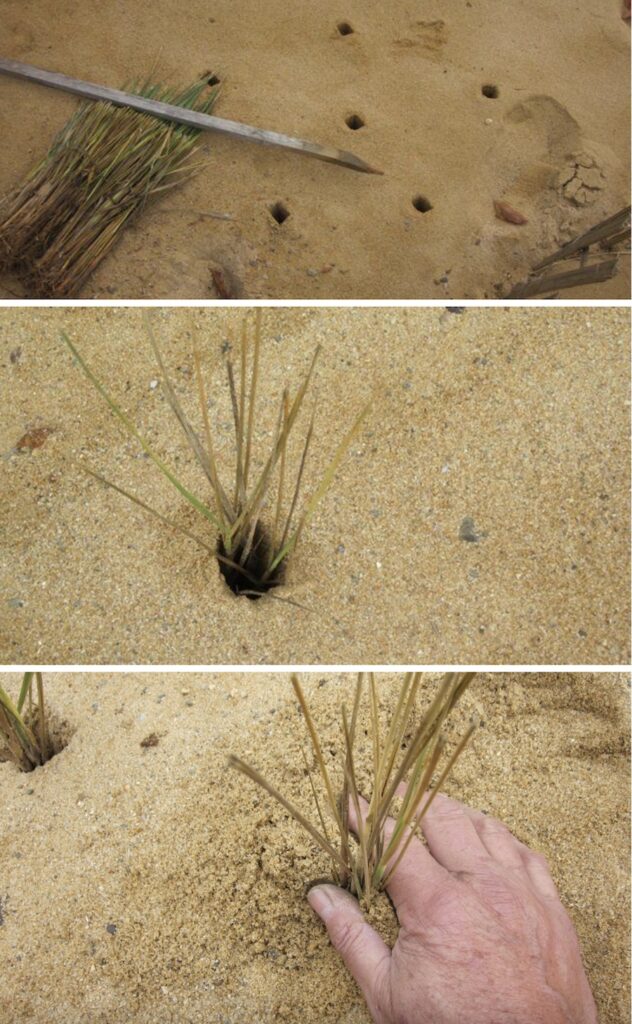As climate change causes more frequent, more intense, and slower-moving storms, people on Outer Cape Cod are having to adjust their ideas about how quickly its beaches are eroding.
A couple of years ago, when the Cape Cod National Seashore began renovations of the parking area and other facilities at Nauset Light Beach in Eastham, the plan called for putting the bathhouse as far as possible from the edge, based on a predicted erosion rate of 12 to 15 feet per year, according to the Park Service website.
Nearby, the nonprofit Nauset Light Preservation Society, which maintains the historic lighthouse north of the beach, has its eyes on erosion for obvious reasons. The lighthouse was last moved in 1996, 300 feet inland. While the society’s website puts the “average natural erosion rate” on the Atlantic side of Cape Cod at 3.8 feet per year, it notes that the figures for the years 1987 to 1994 averaged 5.8 feet per year.

Erosion can be erratic, but the bottom line is that storms move sand and reshape our shores.
Standing up against that erosion, at least in a few places, is an unassuming plant familiar to everyone on Cape Cod: Cape American beach grass (Ammophila breviligulata).
Apparently, our appetite for the grass long ago outstripped its own inclination to be everywhere we want it to be in the wild. Tim Friary says he has been cultivating it for 35 years at Cape Cod Organic Farm in Barnstable. He raises other things there — turnips, arugula, mesclun, potatoes, and even pigs — but beach grass now accounts for about 50 percent of his production.

Friary sells and also installs the grass to control erosion. It goes to landscapers, architects, homeowners, and the National Seashore. He says he has placed it in every town on Cape Cod and sold his crop across the New England coast from Connecticut to Maine.
Gordon Peabody, the founder and director of Safe Harbor Environmental Services in Wellfleet, says that, in his experience, seagrass is “the only native vegetation that holds the Cape together in high winds at the coast.” He says that through the winter — except when the sand is frozen hard — Safe Harbor installs beach grass at least one or two days a week, and Cape Cod Organic Farm is one of its main suppliers.
Beach grass collects and stabilizes the sand in two ways, Peabody says. First, it reduces the wind’s velocity and creates turbulence that causes the sand to drop around the grasses; as it does, it builds volume to form dunes. In addition, the grass’s rootstalks — rhizome mats that can extend down some 20 feet — work to hold the dunes together.

According to Friary, the word “Cape” was tacked onto American beach grass, the species name, when the Natural Resources Conservation Service (part of the U.S. Dept. of Agriculture dedicated to improving agricultural methods that preserve soil and water) was looking for the optimal grass for erosion prevention on the Eastern seaboard. It chose one found on Barnstable’s Sandy Neck for its wider leaves — the better for batting sand out of the air and knocking it down to the dunes. Plants from Sandy Neck provided the seeds of the grass that are sold by the USDA, which today is Friary’s seed supplier.
At Cape Cod Organic Farm, beach grass is planted in rows, Friary says, just like any other crop. It must be planted in sandy loam. It requires vigilance because it does not compete well with weeds. “If you miss weeding,” he says, “your production goes down fast.”
Friary plants the grass seed in March and harvests from October through April, carefully digging the young plants up roots and all. He sets them out in bundles of 225 culms, or stems, until they become dormant and dry.

The planting of culms on sandy banks and dunes happens during the winter, too, and the process can be delicate. Friary says the sand has to be just right: “It can’t be too wet; it can’t be too hard.” And it has to be plentiful enough for trios of dried culms to go in six to nine inches deep. This is because the deeper sand offers more stable temperatures and moisture for the root system to develop. Peabody says that the culms should be planted 10 to 12 inches apart on dunes and 12 to 16 inches apart elsewhere in a random pattern that mimics nature.
Beach grass isn’t the be-all and end-all for stopping erosion. Peabody says his company is known for using cedar shims set like the grasses in random patterns — a kind of biomimicry — in areas where there isn’t time to let grasses grow or in places where the grasses just can’t go, such as where there is saltwater overwash.
Peabody says one comes face to face with the effects of climate change when working in environmental restoration on the Outer Cape.
“You need to put your ego in your back pocket and read your mail,” he says. When you read that mail, if it’s from Friary or Peabody, you’ll find it pretty much says that the sand is shifting: plant beach grass.



